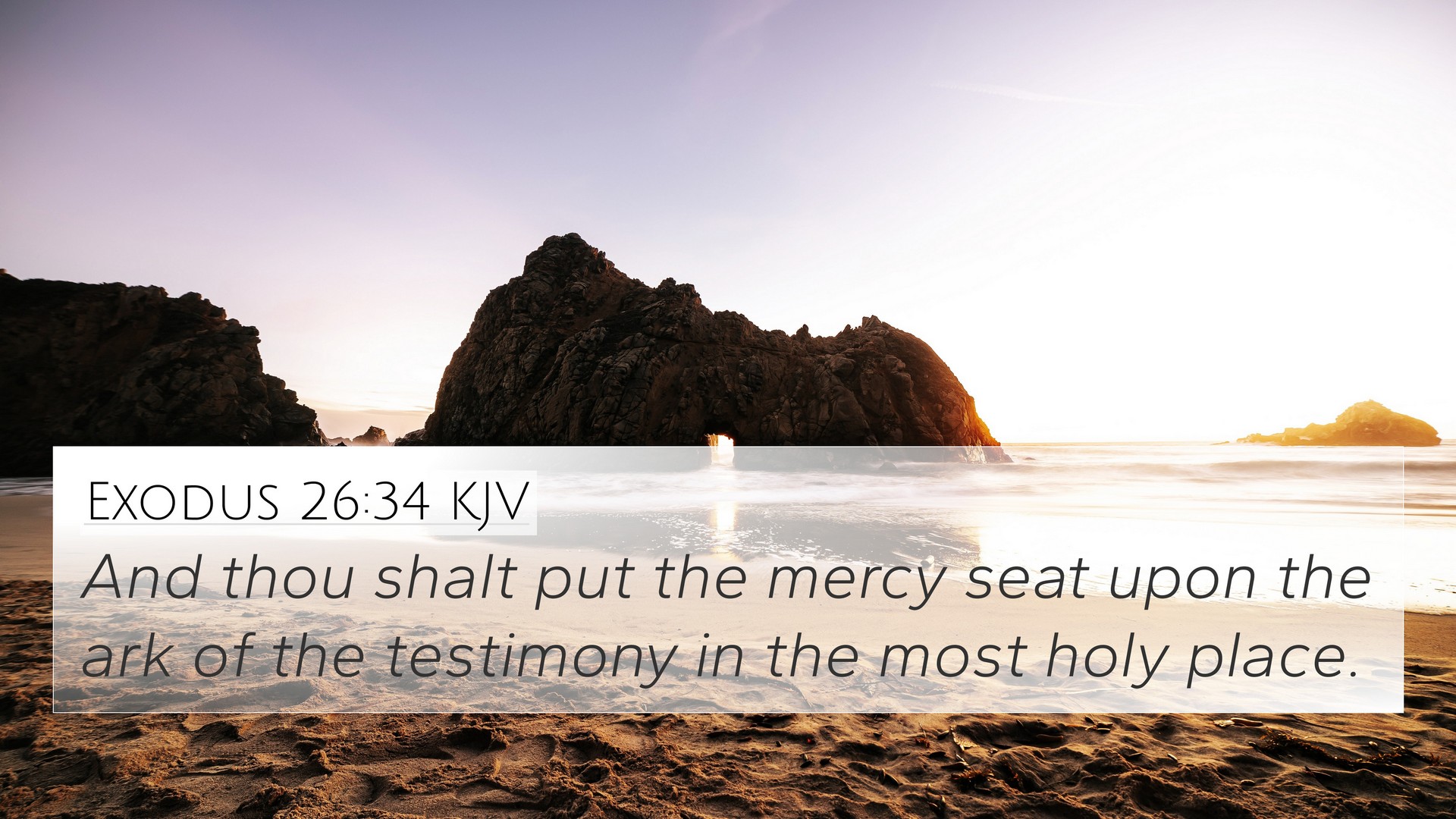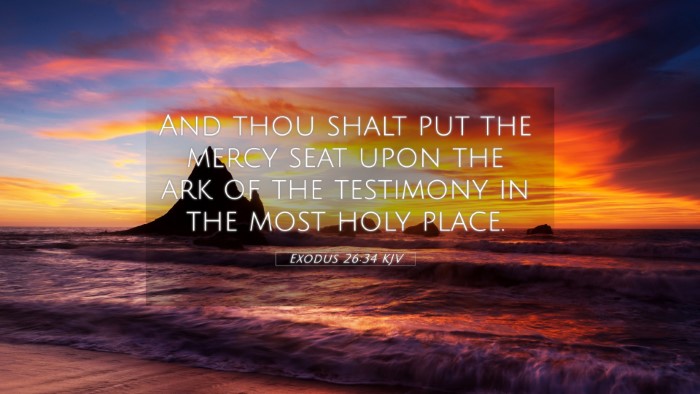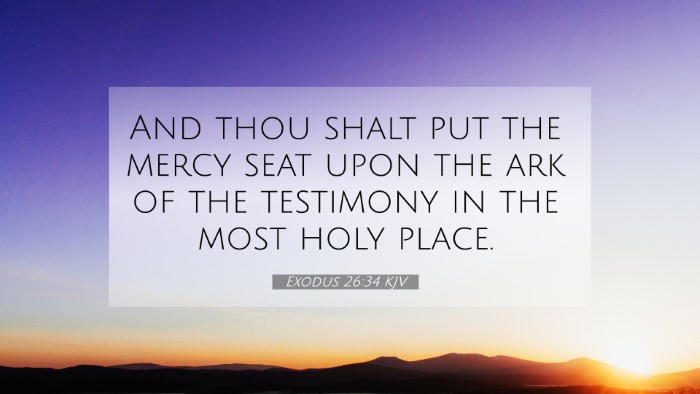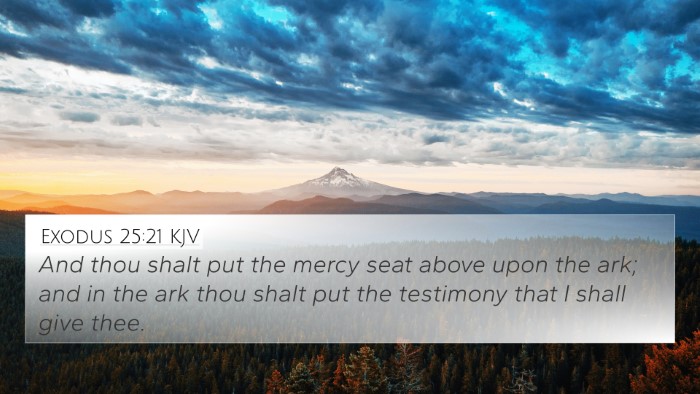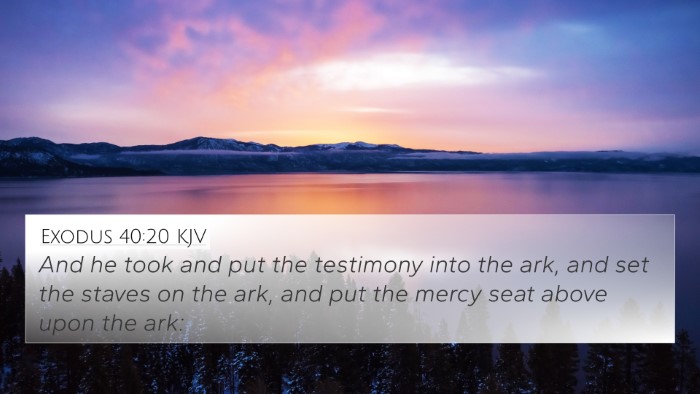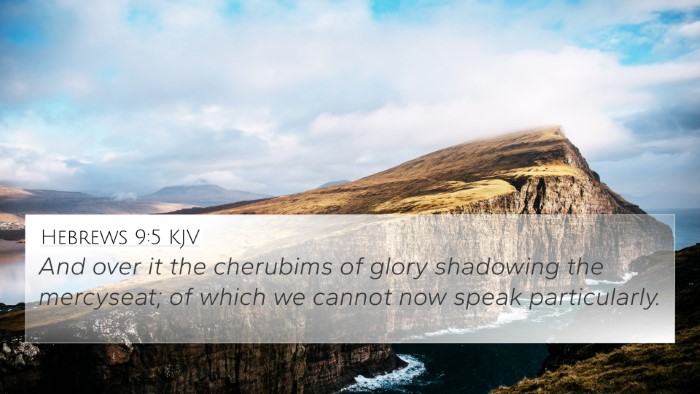Understanding Exodus 26:34
Exodus 26:34 states: "And you shall put the mercy seat on the ark of the testimony in the Most Holy Place." This verse is pivotal in the context of the tabernacle, particularly concerning the symbolism of God's presence among His people.
Significance of the Mercy Seat
The mercy seat, as mentioned in this verse, represents the seat of God's mercy where He would meet with Moses. It signifies the divine fellowship between God and man.
Thematic Connections
This verse connects deeply with themes of redemption, atonement, and divine presence. Matthew Henry emphasizes that the mercy seat is a precursor to a greater understanding of grace found in Christ.
Cross-Referencing Biblical Texts
To further understand Exodus 26:34, we can look at relevant cross-references that illuminate its meaning:
- Hebrews 9:5: "Above it were the cherubim of glory overshadowing the mercy seat." This verse highlights the heavenly significance of the mercy seat.
- Leviticus 16:2: "For I will appear in the cloud above the mercy seat," indicating God's presence associated with the mercy seat.
- Romans 3:25: "Whom God set forth as a propitiation by His blood, through faith," illustrating Christ as the ultimate fulfillment of the mercy seat's purpose.
- Psalm 80:1: "Give ear, O Shepherd of Israel, You who lead Joseph like a flock," invoking the imagery of God’s guidance and presence.
- Exodus 25:22: "And there I will meet with you," reinforcing that the presence of God is intimately associated with the mercy seat.
- Matthew 27:51: "Then, behold, the veil of the temple was torn in two from top to bottom," showcasing the end of the separation from God that the mercy seat signified.
- 1 John 2:2: "And He Himself is the propitiation for our sins," showing how Jesus embodies the mercy that the mercy seat represented.
- Galatians 4:4-5: "God sent forth His Son, born of a woman, born under the law, to redeem those who were under the law," linking the theme of redemption through Christ.
Inter-Biblical Dialogue
This verse not only stands alone but also invites a dialogue between the Old and New Testament. Adam Clarke suggests that understanding the mercy seat aids in comprehending the overall narrative of God’s salvation plan, culminating in Christ.
Tools for Bible Cross-Referencing
For those studying the Bible, utilizing tools such as a bible concordance or a bible cross-reference guide can enhance understanding. These tools serve as essential resources for discovering connections between scripture.
Applying Cross-Referencing in Study
When exploring the connections between scripture, consider methods such as thematic studies or historical analysis, which can reveal intricate links. For instance, comparing the Levitical rituals with Christ's sacrificial act enhances comprehension of theological themes rooted in Exodus 26:34.
Concluding Thoughts
Exodus 26:34 reminds us of the profound symbolism behind the mercy seat and its connections to God’s redemptive history. The intricate web of scripture reveals the mercy and grace that ultimately points to Christ. As believers, understanding these connections not only enriches our faith but also deepens our relationship with God.
